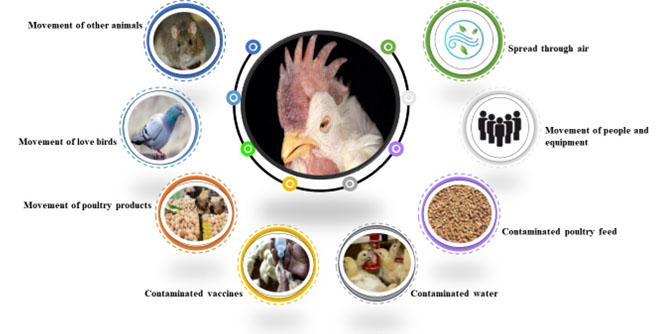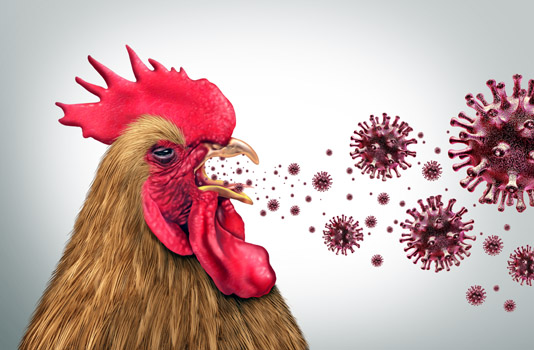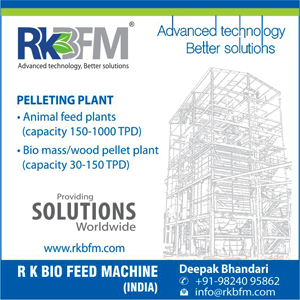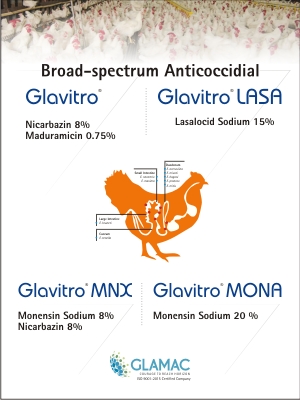Viral Challenges in Poultry: The Fight Against Microscopic Invaders
Introduction
Viruses, those microscopic troublemakers invisible to the naked eye, pose significant threats to poultry. Unlike bacteria that can multiply outside host cells and are treatable with antibiotics, viruses need to invade host cells to replicate. This makes viral infections particularly challenging, as antibiotics are ineffective. Hence, vaccination plays a crucial role in controlling these diseases in poultry.

Technical Services Manager
Nanovet Nutrition Pvt. Ltd.
Bengaluru
Symptoms and Causes of Viruses
Viral outbreaks can wreak havoc on the poultry industry, leading to reduced production and economic losses. Common viral diseases include avian influenza, Newcastle disease, and infectious bronchitis. These infections can cause sudden death in young birds and prolonged illnesses in adult birds, spreading through the mouth, nose, and eyes. Factors such as virus strain, mode of infection, and environmental conditions influence the severity and progression of these diseases.
 Why Summer Sees Major Outbreaks?
Why Summer Sees Major Outbreaks?
Summer is notorious for viral outbreaks in poultry due to several predisposing factors:
• Warm and Humid Conditions: These provide an ideal environment for viruses to survive, replicate, and spread.
• Increased Pest Activity: Mosquitoes and other pests are more active during summer, acting as vectors for viral transmission.
• High Stress Levels: Heat stress during hot months weakens the immune systems of poultry, making them more susceptible to infections.
• Overcrowding: To manage heat, poultry may gather in shaded or cooler areas, increasing the likelihood of close contact and disease transmission.
• Dehydration: Inadequate access to clean water can lead to weakened immunity, further increasing vulnerability to infections.
Common predisposing Factors for Viral diseases
1. Heat Stress
Heat stress occurs when there’s an imbalance between heat generation and heat loss in poultry. It can lead to poor performance, economic losses, and higher mortality rates. Poultry are most comfortable in a thermoneutral zone around 22-28°C.
Causes: Heat stress happens when birds produce or absorb more heat than they can lose.
2. Toxins in Feed
Poor quality feed or improper storage conditions can lead to the growth and spread of viruses, infecting the birds that consume it.
Causes: The close proximity of large numbers of birds in commercial poultry farms facilitates the rapid spread of diseases.
3. Proximity to Agricultural Land
The proximity of poultry farms to agricultural land poses a significant risk for viral disease spread.
Causes: Paddy crops in these areas increase humidity levels due to water irrigation methods, creating an ideal environment for viruses to thrive and spread among poultry populations.
4. High Humidity
High humidity triggers behavioral, physiological, and immunological responses, affecting productivity.
Causes: Dehydration significantly impacts the immune system of birds, making them more susceptible to diseases and infections.
5. Immunosuppression
Immunosuppression in birds creates an environment where viruses can easily mutate and become more virulent.
Causes: This condition further exacerbates outbreaks, making it a critical factor in poultry health management.
 Post Mortem Findings
Post Mortem Findings
In severe cases of viral infections, a cheese-like plug can be found in the lower trachea or bronchi, causing respiratory distress. Sticky fluid may build up in the intestines and kidneys, indicating potential organ complications. Milder forms may show excess mucus and caseous exudates in the air sacs, primarily affecting the respiratory system.
 Treatment and Prevention
Treatment and Prevention
Early diagnosis and vaccination are key to controlling viral diseases like infectious laryngotracheitis. Vaccinating unaffected birds can reduce the disease’s severity and limit its spread.
Control Measures
• Biosecurity: Implementing strict biosecurity protocols is essential. This includes controlling farm access, minimizing contact with wild birds and rodents, and enforcing rigorous cleaning and disinfection procedures.
• Sanitation: Regular cleaning of poultry housing, equipment, and surrounding areas prevents pathogen buildup and reduces the spread of viruses.
• All-in-All-Out Management: This practice involves bringing in and removing entire groups of birds simultaneously, reducing disease spread and promoting consistent growth.
Conclusion
Maintaining biosecurity, adhering to vaccination protocols, and employing all-in-all-out management are crucial for reducing disease outbreaks in poultry. By prioritizing flock health, farmers can enhance productivity and profitability, creating a more sustainable operation. Staying updated on best practices and research is vital for continuous improvement.
Related News: Andrés Pintaluba and Nanovet Nutrition announce strategic collaboration






